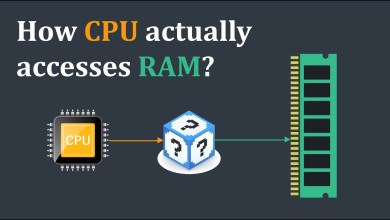Zero Trust Explained in 9 mins | CompTIA Security+ SY0-701
🔒 What is Zero Trust in Cybersecurity? Protect Your Network in 2024! 💻
In today’s rapidly evolving digital landscape, cybersecurity threats are more sophisticated than ever. Traditional defenses like firewalls and intrusion detection systems are no longer enough to protect modern, deperimeterized networks. This is where the Zero Trust model comes into play.
What is Zero Trust?
At its core, Zero Trust is a security framework that challenges the old “trust but verify” model and instead operates under the principle of “Trust nothing, verify everything.” With the rise of remote work, cloud adoption, mobile technologies, and wireless networks, we need more advanced security measures.
Gone are the days when a strong perimeter defense could keep attackers out—just like a castle’s moat used to protect it. Nowadays, cybercriminals can easily bypass these defenses with more advanced tools, much like flying a drone over the castle walls. 🏰
Why Zero Trust is the Future of Cybersecurity
The Zero Trust model is built on the idea that no user, device, or transaction should be trusted by default, whether it’s inside or outside your network. Every device and user must be continuously authenticated. Here are the key elements of Zero Trust:
1. Adaptive Identity
Zero Trust requires real-time, dynamic verification of users, taking into account their behavior, location, and device. This ensures a continuous check on who’s accessing what.
2. Threat Scope Reduction
By limiting users’ access to only what they need to perform their job, Zero Trust reduces the attack surface and limits the damage that compromised credentials can cause.
3. Policy-Driven Control
Zero Trust enforces strict policy-driven access based on user behavior, ensuring segmented access across the network to minimize risks.
How Zero Trust Protects Deperimeterized Networks
Modern organizations are moving towards deperimeterization due to the rise of cloud computing, remote work, and mobile devices. Traditional boundary defenses no longer offer sufficient protection. Zero Trust ensures that even if a breach occurs, attackers won’t have free reign across your entire network. 🎯
Zero Trust Architecture: Two Critical Planes
Zero Trust relies on two key operational planes:
The Control Plane: This is where policies are set and managed.
The Data Plane: It ensures that these policies are enforced correctly and access is only granted to authenticated users.
Why Zero Trust is Crucial for 2024 and Beyond
With the increasing digitalization of businesses and a sharp rise in cyberattacks, it’s no longer a question of “if” but “when” your network might be targeted. Organizations embracing the Zero Trust model ensure their systems are more resilient to both internal and external threats.
🔔 Call to Action:
Subscribe for more tech insights on System, Network, Virtualization, Cloud Computing, and Cybersecurity. Stay ahead of the latest trends in IT security and learn how to safeguard your infrastructure. Click Subscribe now to get notified about our latest updates and videos!
🌐 Subscribe on YouTube:
Learn More
Enhance your cybersecurity skills by enrolling in our specialized courses on cloud computing, virtualization, and network security. Visit:
👉 Enroll Now:
Contact Us
Got any questions or need assistance? We’re here to help!
📧 Email: asif@upskillwithasif.com
📞 Call: +91-8121701785
Follow Us on Social Media for Updates
Udemy Profile:
YouTube Channel:
Instagram:
LinkedIn Profile:
Popular Hashtags for this Blog
#ZeroTrust #CyberSecurity2024 #NetworkSecurity #CloudComputing #Virtualization #TechTips #TechInsights #Trending #ITSecurity #SystemAdmin #UpSkillWithAsif #CyberThreats #TechChannel #WorkFromHome #ZeroTrustArchitecture #DigitalSecurity #DataProtection
Stay informed and upskill yourself for a secure IT future!
[ad_2]
source



